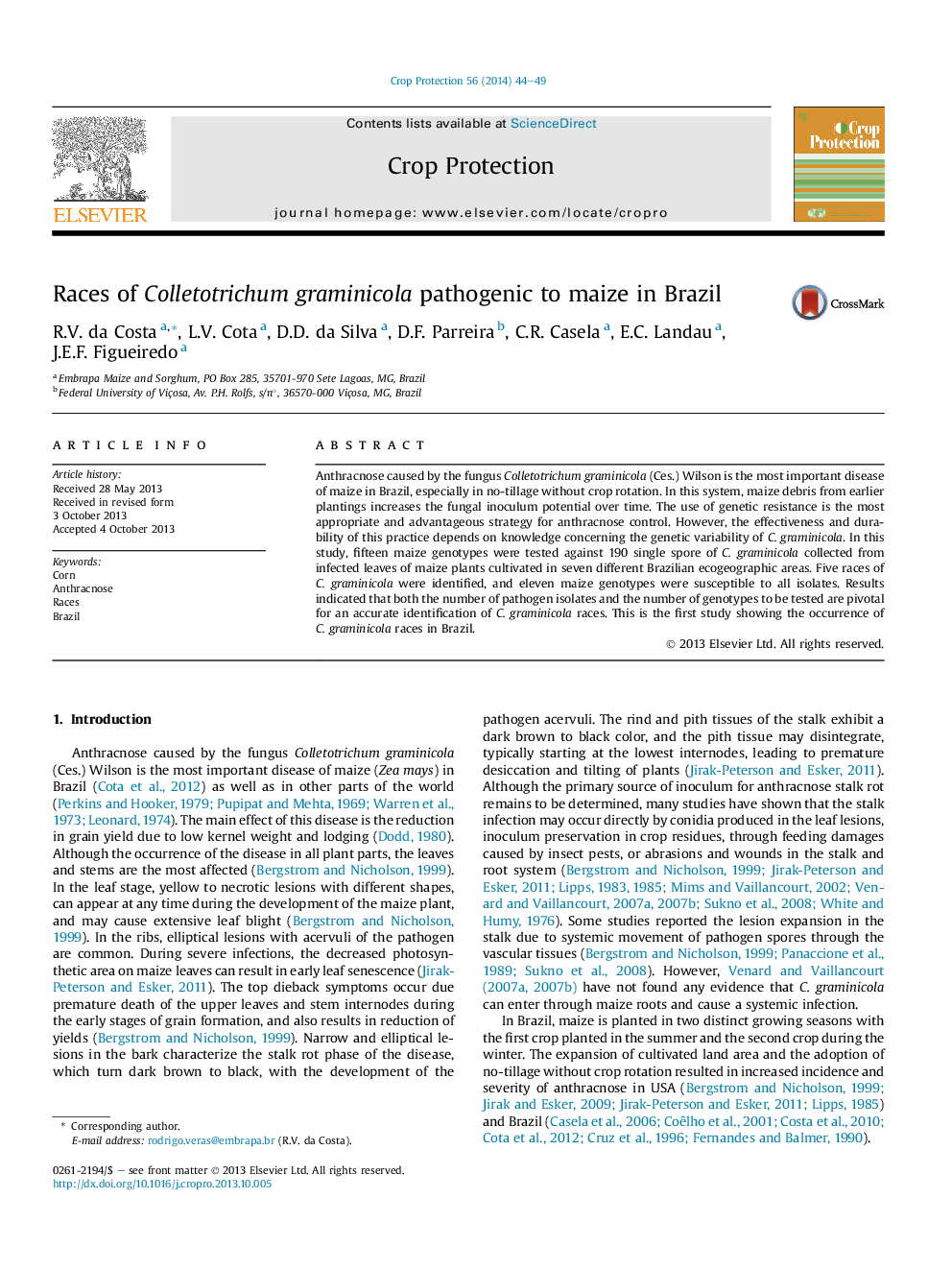| Article ID | Journal | Published Year | Pages | File Type |
|---|---|---|---|---|
| 6373764 | Crop Protection | 2014 | 6 Pages |
Abstract
Anthracnose caused by the fungus Colletotrichum graminicola (Ces.) Wilson is the most important disease of maize in Brazil, especially in no-tillage without crop rotation. In this system, maize debris from earlier plantings increases the fungal inoculum potential over time. The use of genetic resistance is the most appropriate and advantageous strategy for anthracnose control. However, the effectiveness and durability of this practice depends on knowledge concerning the genetic variability of C. graminicola. In this study, fifteen maize genotypes were tested against 190 single spore of C. graminicola collected from infected leaves of maize plants cultivated in seven different Brazilian ecogeographic areas. Five races of C. graminicola were identified, and eleven maize genotypes were susceptible to all isolates. Results indicated that both the number of pathogen isolates and the number of genotypes to be tested are pivotal for an accurate identification of C. graminicola races. This is the first study showing the occurrence of C. graminicola races in Brazil.
Keywords
Related Topics
Life Sciences
Agricultural and Biological Sciences
Agronomy and Crop Science
Authors
R.V. da Costa, L.V. Cota, D.D. da Silva, D.F. Parreira, C.R. Casela, E.C. Landau, J.E.F. Figueiredo,
